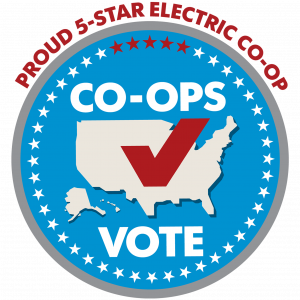By Dwight Miller
As we move toward the Thanksgiving holiday season, it’s appropriate to take a step back and thank our Heavenly Father for all the good things around us. Since this comes forth from the ST&LP department, we will focus specifically on five things to be thankful for this Thanksgiving holiday season that help get our workers back home safely every night.
(1) OHIO’S COMMITMENT TO SAFETY: “Commitment to safety” sounds cliché, but let’s dive in. Taking a stand for safety and committing to safety sounds easy and like something everyone would be glad to jump on board with. But the opposite is often true when workers resist the very things that could save their lives. As an example, there was a huge resistance to wearing hard hats when they first came out. A solid and true commitment to safety includes a “fail-safe” approach to high hazard situations. And that means we determine things that could reasonably go wrong based on past incidents, a solid hazard assessment with intelligent discussion, and just plain common sense.
I’ll give an example of a “fail-safe” approach that Ohio has adopted. In 2014, OSHA required that all electrical utilities include dielectric footwear as part of their PPE hazard assessment. In Ohio, we have seen incident after incident (I personally learned of 10 in my career) where dielectric footwear has saved someone’s life or livelihood. Therefore, in our PPE hazard assessment, it was determined that they are needed in various situations as secondary protection as a final fail-safe element, regardless of how uncomfortable or heavy they are.
As I have traveled all around the US, believe it or not, it is rare to see dielectric footwear used at all. It’s expensive for the cooperative to buy, it’s heavy for the worker to use, and one of the more difficult parts of the safety program to manage in every way. But we’ve had them save potentially two lives in the past 2-3 years just here in Ohio, yet we rarely hear of such incidents because nothing happened. However, we hear story after story of electrical contacts where hot boots would have probably prevented a fatality or serious injury. Yet, this important piece of “fail-safe” equipment continues to get neglected all across the nation. I would like to say that it was determined by many utilities to be unnecessary, but the fact is that many electrical utilities and contractors have never even had such a conversation, in violation of the only rule that truly exists – including it in the PPE hazard assessment.
(2) OHIO’S ATTENTION TO SAFETY: It seems we continue to make progress each year with our attention to safety. How is attention to safety different than commitment to safety? I think commitment to safety is broad, but attention to safety is boots on the ground where we intentionally go to work on safety-related issues. This takes time. This takes money. This takes analysis. This takes tough conversations. Sometimes this even takes letting certain personnel go if need be.
But more than all this, when we give our attention to safety, it becomes engrained into every part of the cooperative and serves as the foundation for everything we do, especially in all operations and engineering. When we have a near miss, we put things into place to prevent it from ever happening again. When we hear someone say something that relates, we place ourselves in a receptive position to ponder what we could do to help us improve our safety program in that area.
One area where we are not yet 100% in Ohio is having effective weekly in-house safety meetings which I believe is attention to safety in its most effective and finest form. Yes, we have work to do in the field, but if the crew never makes it home, then the incident investigation will reveal that it really wouldn’t have taken any time at all to keep our workers safety-focused in the bigger picture.
(3) OHIO’S OPERATIONS AND SAFETY GROUPS ARE BETTER UNIFIED: We will always have trouble anytime that safety is seen as something separate. If safety is something extra, it’s in the way. It costs more, takes longer, it’s inconvenient, and stands in the way of progress. Furthermore, when the lights go out, linemen can now adapt to getting the lights back on “fast” by eliminating unnecessary safety steps (“why so many redundancies?”). After all, we want to be fully restored before the local IOU, correct?
If it’s normally operations + safety, then it turns into operations + git ‘er done when it comes crunch time and the lights are out. But when we simply learn to operate safely, everything changes. After all, safety isn’t really a thing, is it? When we try to describe safety, it’s more of a value than a thing, right?
I’m very thankful to see our operations and safety teams doing a better job working together as a team with the same goal in mind, “Go get the job done safely, guys. If you feel that you can’t do it safely, come back and see me and let’s work to find a solution together.”
I see the future of safety where all managers are taught to do their business safely and therefore, all managers become safety managers in their particular area of expertise. I can see that there will always be regulatory and compliance folks, but who knows how to operate safely better than the operations manager? The answer here should be “nobody.” And when the expectations for the operations manager is to operate safely, then he will need to be well-educated and kept up-to-date on safe operations and pass along such critical information to the crews during coaching sessions, a.k.a. crew observations. And if he needs assistance to operate safely, then we’ll need to get him some support.
And this also applies to other managers, such as the engineering manager, where we engineer the jobs with public and worker safety as a foundational principle and requirement for all engineering. And all senior leaders must be engaged in the safety program because of the decisions that are made in staff meetings that affect worker and public safety on the front lines.
But we’re not there yet as we still do have some resistance at the operational level because change is hard. “Nobody’s ever been hurt doing it the way we’ve always done it, so this all seems kind of silly to me.” This mindset that undermines safe work practices must continue to be crushed from above (senior leader) and beneath (front line workers) until it no longer remains.
(4) OHIO IS LEARNING TO MEASURE SUCCESS BY THE PRESENCE OF SAFETY: I am so thankful that we are learning to manage our lagging safety metrics without using the absence of injury to gauge our safety success. When someone steps in a hole that was covered with grass and turns their ankle, it’s probably NOT because your safety manager is not doing his job, workers don’t care about safety, or that senior staff is not giving attention to safety. It has been proven that metrics do help to indicate culture, so we understand that when we give our attention to safety, our metrics often reflect that. But we also understand that they are an inaccurate indicator of the success of our safety programs, and at worst serve as a tool for complacency and harmful pride.
We now understand that we could have had a “0” DART rate, “0” TRIR rate, and “0” Vehicle Accident rate for the last 5 years and be set up for an electrical contact tomorrow. We now understand that Heinrich’s triangle was not nearly as accurate as everyone thought it was. Herbert William Heinrich worked for an insurance agency and the triangle was just his theory that has proven over time to be inaccurate and misleading. How so? All industries have seen slips, trips, and falls decline over the last 20 years as reflected in safety metrics, while SIF (Serious Injuries and Fatalities) incidents have remained unchanged, proving it’s more of an arrow than a triangle.
Instead, we now understand the importance of the presence of safety - that everyone speaking up in the field is the activity that helps to prevent SIF incidents more than any other single thing, even though difficult to measure. Furthermore, we are also understanding that arrogant leaders in the field hinder the presence of safety on the front lines. In turn, we are doing better at hiring people with high character traits (rather than experience) and are making sure that our crews are not being led by folks with egos who fail to promote Speak Up, Listen Up (SULU) concepts. We are finally understanding that the #1 reason people are typically hired is based on what they can do, and the #1 reason people are fired is based on who they are, so we’re focusing more on character.
(5) OHIO IS LEARNING TO PROPERLY DEAL WITH HUMAN ERROR INCIDENTS AS COMPARED TO VIOLATIONS OF LIFE-SAVING RULES. Finally, I’m thankful that are understanding that organizational failures typically drive incidents. In times past, cooperatives would point at the worker and say, “Bad worker,” and then fire them, while the organizational failures would continue in an endless cycle of incidents and injuries.
But now, we understand that human error is best managed through the use of effective after action reviews, engaging all crew members discussing what went right and what went wrong, with each worker owning their failures as needed and figuring out the best way to move forward.
But we also now understand that a culture which eliminates healthy fear is an organization that also often loses respect for its leaders. Every field worker deserves to know that if they get caught taking an intentional shortcut on a life-saving rule, that it could very well be their last day on the job, and that’s a healthy fear we can live with. That’s why we have highway patrols on our highways – not because people are bad, but because people tend to drift when accountability is lacking. Leaders now understand that whatever we permit, we promote and that we can absolutely not permit workers to take shortcuts in the non-negotiable life-saving areas. But workers also deserve to know that if they simply approach every job as a professional with full intention to follow the rules, that there will always be plenty of grace when human errors are made, while learning from them to avoid repeating.
When workers understand that they must get on board after management sets clear expectations by establishing boundaries in a positive environment of care where open communication is safe, then something amazing happens. Trust is established, respect abounds, but most importantly, safety thrives. But we’ve also just done something that is so necessary by creating a culture where people understand their boundaries and feel safe within them, while they love to come to work around great people that our co-ops hire and keep around. And that is something special that we should all be able to get behind and something that I am very thankful for.





